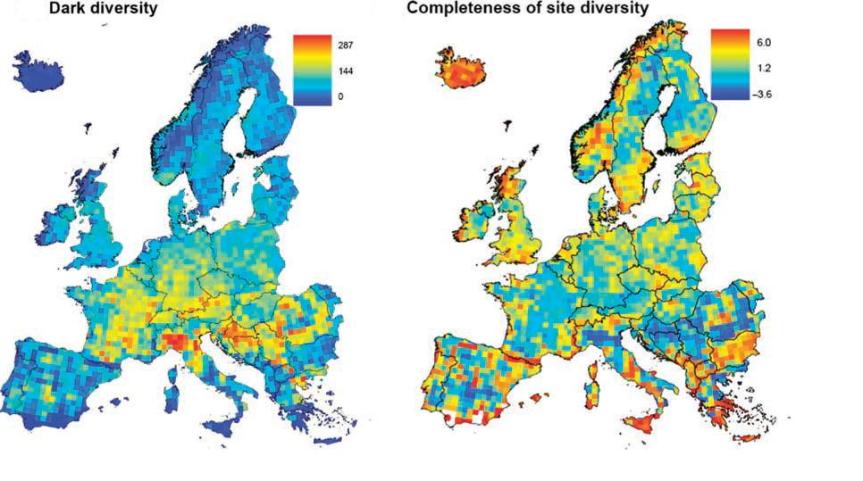Mapping biodiversity at large-scales has a long history and is needed to address theoretical issues on species evolution, macroecology, and biogeography, or to help prioritize conservation efforts. Traditionally, observed species have been used to investigate large scale diversity patterns. However, raw values of observed species richness across large spatial extents can be difficult to interpret due to the concurrent variation in regional species pools. If we can estimate the set of absent species that could potentially inhabit a study site, it would add a new important dimension to the study of local diversity patterns across large spatial extents. This set of absent suitable species is called dark diversity, a concept proposed recently by Professor Meelis Pärtel who leads the macroecology workgroup at the University of Tartu, Estonia. In order to shed light on dark diversity, researchers need to know which absent species are present in the surrounding region, which have a reasonable probability to disperse to the study site, and which are able to tolerate the local prevailing environmental conditions. The concept of dark diversity has already gained a lot of attention; in addition to several responses in academic literature, it has also been covered in several blogs (see here and here) and also in Faculty100.
In a paper in the October 2015 issue of Ecography, Argo Ronk, Robert Szava-Kovats and Meelis Pärtel from the macroecology workgroup applied a novel method to quantify European-wide plant dark diversity. They used both geographically limited region and species’ environmental preferences. While delimiting a region is rather straightforward, it is more challenging to find environmental preferences for a large number of species. For this they used a co-occurrence approach; a mathematical analysis of a large data set to find which species often appear together in the same sites, thus requiring the same environmental conditions. If one of these species is present and another is absent, the absent species is likely in dark diversity. Dark diversity allows researchers to study local diversity at a relative scale: how many suitable species are present, how many are absent, in other words, how much of the species pool is realized in each locality. This can be quantified by completeness of site diversity, proposed a few years ago.
The authors used a European-wide plant distribution atlas and found that dark diversity is highest in south Europe, which is in accordance with the well-known latitudinal pattern of observed species richness. However dark diversity was rather low compared to observed species richness. Completeness of site diversity exhibited a scattered pattern across Europe. More complete sites can be found in both northern Europe and southern Europe; central Europe contains mainly moderately complete sites which might be due to intensive land-use causing local extinctions. Compared to dark diversity and observed richness patterns, completeness of site diversity showed no latitudinal gradient. Mountainous areas in Europe (e.g. Scandinavia, Pyrenees) showed high completeness of site diversity, perhaps due to better preserved ecosystems there. In conclusion, better insights can be obtained about local diversity patterns and underlying processes by exploring not only observed but also dark diversity.


